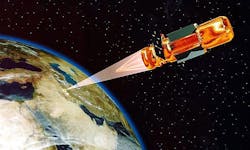Pentagon to study anti-missile laser weapons in space as part of nation's space weapons arsenal
WASHINGTON – The U.S. Department of Defense (DOD) will study the possibility of space weapons — perhaps particle beams, ray guns, space laser weapons, or orbiting missiles — that could intercept enemy missiles coming off the launch pad. Defense One reports. Continue reading original article
The Military & Aerospace Electronics take:
21 Jan. 2019 -- The Pentagon will forgo actually developing them, for now. It’s part of the Trump administration’s effort to expand the scope of what we’re postured to defend against.
Much has changed since the Pentagon’s last attempt to publicly frame the state of missile defense and the way forward: 2010’s Ballistic Missile Defense Review. The review will also discuss prospects for using SM3 IIA missiles, of the sort on Arleigh Burke-class Aegis destroyers, as ICBM interceptors, with testing to occur in 2020.
New weapons would be partially cued by a planned constellation of sensor satellites in low Earth orbit that will keep tabs on Russian, North Korean, or Chinese mobile missiles — part of the “space-based sensor layer” that is to be in place by 2023.
Related: Pentagon wants more money for directed-energy weapons for drone-swarm and missile defense
Related: Laser weapons show their stuff in real-world conditions
John Keller, chief editor
Military & Aerospace Electronics
Ready to make a purchase? Search the Military & Aerospace Electronics Buyer's Guide for companies, new products, press releases, and videos

